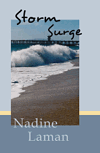Writer, Susan Gabriel is a family therapist and I am a social worker (and a writer). Anyway, last week we were talking about human resilience. Since then, I've been thinking all weekend about resilience.
I have no problem putting down a novel (or throwing it in the trash) after reading less than the first chapter. I don't like reading. I read for information not recreation, even if it is fiction. If the writing is flat and boring me to death, then I'm done. (Unfortunately, I have the same reaction to real people - unless they are my clients.)
So what do I want to see in writing? Humanity. Whether the novel is about human people or fantasy people, I want to see human qualities. Here again, I'm back to crashing the urban myth that to learn to write well one must read [in their genre].
I'm probably going to be denounced by the powers that be, but that is like telling someone that they must go to art museums to learn to paint or sculpt. First you have to learn the techniques then go observe how others have applied them.
There is a certain amount of observation of people one can do. However, if you want to learn about people, then read a book on basic human growth and development. Take a psych 101 class. Don't just copy what you read in other writer's works - they might have it all wrong.
What's this have to do with resilience? Everything. What does this have to do with character development? It means I think that the standard advice is flawed. That is the wrong kind of research to do if you want to be a great writer. For one thing, most of the books out there really aren't that good, regardless of the sales records (that just reflects on the effectiveness of the marketing).
A few years ago one of the television networks ran promos that good television was all about drama. I'd add that it was about HUMAN drama. You have to understand resilience to know how to push your characters beyond their strengths, have them react, regroup, and succeed.
In high school senior English/college prep English, Miss Barbee made us identify the flat and round (well rounded) characters in everything we read that year. Not every character should be well rounded - who really cares what the waiter looked like?
You have to write in 3D (three dimensional) - flat, round, and very round main character (like not everything in a painting is in the foreground). While you are telling a lovely story with perfect pitch in the plot, sub-plot, and all the elements of writing, push your MC and make them interesting. Make them human. They can't just survive, they have to thrive and you can't make the obstacles too easy.
So back to the reading bit to learn to write (to tie up the loose ends in this post). AFTER you learn the techniques then read as a writing student. Look at how the techniques were applied. Or...read for enjoyment and quit justifying it by thinking you are learning to write.
Susan Gabriel: http://www.susangabriel.com/
Monday, October 12, 2009
Subscribe to:
Post Comments (Atom)

 When Paul Fenton stops for breakfast in a small town, he gets more than he bargained for in the process.
When Paul Fenton stops for breakfast in a small town, he gets more than he bargained for in the process.
 When two-hundred-year-old human remains are discovered on one of Neptune's moons, Earth's history falls into question.
When two-hundred-year-old human remains are discovered on one of Neptune's moons, Earth's history falls into question.
 Emily's husband persuades her to try thalidomide to ease her symptoms as she is unaware of the devastating effects.
Emily's husband persuades her to try thalidomide to ease her symptoms as she is unaware of the devastating effects.
 Who is the women's shelter bomber? Melissa Ryan suspects that her husband knows.
Who is the women's shelter bomber? Melissa Ryan suspects that her husband knows.
 Further developments with the Wilder family.
Further developments with the Wilder family.
 A hidden past shakes the O'Donovan family to its core
A hidden past shakes the O'Donovan family to its core
 A swirl of emotion and choice, set in Cape Town, South Africa
A swirl of emotion and choice, set in Cape Town, South Africa
 Love is a constant, but it comes at a price.
Love is a constant, but it comes at a price.
 When the road ahead is unclear, sometimes you have to rely on trust.
When the road ahead is unclear, sometimes you have to rely on trust.
 The struggle between good and evil is ages old. It gets all the more complicated when the good guys aren't all good and the bad guys have redeeming qualities.
The struggle between good and evil is ages old. It gets all the more complicated when the good guys aren't all good and the bad guys have redeeming qualities.
 Story of a land mothering two races of people – the light-skinned and the dark-skinned.
Story of a land mothering two races of people – the light-skinned and the dark-skinned.
 A gifted Ukrainian ballerina comes into possession of a mysteriously coded address book.
A gifted Ukrainian ballerina comes into possession of a mysteriously coded address book.
 Six passengers' lives change for better or worse after they arrive in Honiton.
Six passengers' lives change for better or worse after they arrive in Honiton.
 Resilience and love in a harsh and unforgiving age
Resilience and love in a harsh and unforgiving age
 Kathryn's Beach
Kathryn's Beach High Tide
High Tide Storm Surge
Storm Surge
I like that your posts challenge common precepts on writing technique. I think you raise interesting points. Sometimes I love my MC, other times I don't. Maybe that helps too.
ReplyDeleteCarrie
Thank you, Carrie,
ReplyDeleteI hope they make people think. I hope they are worth reading.
Excellent post, my friend.
ReplyDeleteSusan, you saw this before I emailed to tell you about the mention. *blush*
ReplyDeleteI think you're absolutely right! I just got my first novel published, and now that I think back, I don't know how much of my time I spent making sure my characters seemed human enough to be believable. I plan on starting my second novel in January, so I know now I have to build on what I started.
ReplyDeleteCongratulations on your first novel. That is great that you are going on to a second. Post your www link. I'd like to read more.
ReplyDelete